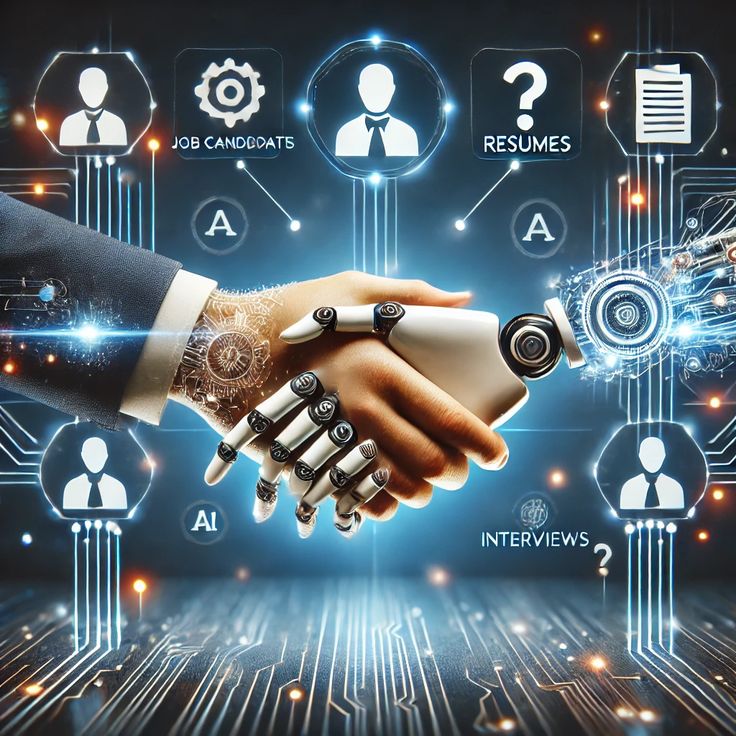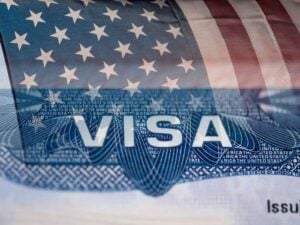Finding skilled engineers is a top priority for startups aiming to grow fast. The challenge isn’t just locating candidates, but identifying and hiring senior talent in a crowded market. AI-powered recruiting tools can help by connecting you with global professionals quickly and effectively. This guide offers clear strategies and steps to build strong engineering teams. Start recruiting with Vanna now to streamline your hiring process.
Navigating Today’s Engineering Talent Market
Key Concepts to Understand
Talent acquisition goes beyond filling open roles. It involves planning for future needs, building your company’s reputation, and creating a steady flow of potential hires. Engineering roles also vary by experience. Senior engineers, with 5 to 8 years of expertise, handle technical work and guide others. Staff engineers, with 8 to 12 years, shape broader technical plans. Principal engineers, with over 12 years, define technical direction across the company.
Pay structures have changed significantly. Engineers with specialized skills often receive high offers and negotiate from a strong position. Competitive salaries, equity, and growth opportunities are now essential to attract top talent. Focusing only on cash compensation won’t cut it. Packages should also include meaningful equity and clear career paths.
Linking Talent to Business Growth
Your engineering team directly impacts product delivery, funding success, and market position. Strong technical leaders speed up development, improve systems, and drive innovation. Without them, overloaded teams and delayed launches can hurt customer trust and revenue.
When deciding on a hiring approach, weigh building an in-house team against partnering with external experts. Internal teams understand your culture but require time and resources to set up. External solutions provide quick access to networks and processes, though they might not fully align with your long-term goals.
Planning Your AI Recruiting Strategy
Understanding Talent Market Segments
The tech talent market breaks into distinct groups. Big Tech offers high pay and resources but limited ownership stakes. Startups provide growth potential and equity, though with more risk. Consultancies focus on varied projects but often lack job security. Across all segments, demand for specialized skills outpaces supply, pushing up salaries and competition.
How Recruiting Tools Have Advanced
Old-school methods like job boards and referrals fall short for startups needing specific talent. Generic postings rarely attract senior engineers. Today’s solutions include targeted platforms, AI matching, and thorough vetting systems.
Executive search firms focus on high-level roles but come with steep costs and longer timelines. Niche platforms offer curated candidates but may not cover global markets. AI tools speed up hiring by matching candidates accurately and improving quality. Combining human insight with AI automation often works best.
Why Traditional Hiring Fails Startups
Startups often lack the brand recognition to draw top talent through standard channels. Limited visibility creates challenges beyond just offering competitive pay. Job boards bring in too many irrelevant applications. Referrals help with team fit but can narrow diversity. General recruiters may not have the technical knowledge to assess engineering skills.
The core issue is balancing volume with quality. Startups need systems that handle many candidates while ensuring high standards, including technical evaluations and cultural fit, which traditional methods struggle to provide.
Global Trends Impacting Hiring
Remote work opens up access to talent worldwide but adds challenges like evaluating candidates and onboarding them. Hiring from regions like Latin America can offer cost advantages, though managing time zones, cultural differences, and legal rules requires careful planning.
Remote interviews also demand updated approaches. Assessing practical skills, rather than memorized solutions, is key to identifying capable engineers in today’s market.
Meet Vanna: Your AI Recruiting Partner
Unlimited Hiring with Vanna’s Subscription Model
VanHack’s Vanna offers a flat $3,000 monthly subscription for unlimited hires. This saves money compared to per-hire fees. For instance, a company hiring seven engineers paid $9,000 through Vanna, versus over $100,000 with typical agency costs. This predictable pricing helps scaling startups manage budgets while building teams fast.
How AI Matches Candidates to Roles
Vanna uses AI, powered by OpenAI’s Large Language Models, to align job needs with candidate profiles. Drawing from a database of over 500,000 global tech professionals, it evaluates skills, salary expectations, and relocation willingness. The system delivers shortlists of 3 to 5 strong matches, saving recruiters time by focusing on top prospects.
Thorough Candidate Evaluation Process
Vanna assesses candidates through multiple methods for a complete picture. Here’s what sets it apart:
- Video Introductions: Recruiters evaluate communication and English skills in 90 seconds, ideal for global hires.
- Coding Assessments: Partnered with platforms like Woven, these provide measurable technical skills data directly in candidate profiles.
- AI Technical Interviews: Through Ripples, candidates complete 30-minute sessions with an AI interviewer. Recruiters get videos, transcripts, and scores for flexible review.
Simplified Global Hiring and Relocation
Vanna includes support for international hires in its pricing. Immigration experts manage visa processes for candidates and families, a service worth about $5,000 on its own. Additional help with housing, flights, and local settling-in eases the transition. Community-building efforts, like local WhatsApp groups, support engineers after relocation. Chat with Vanna now to tap into global talent with minimal hassle.
How to Strengthen Hiring with AI Tools
Deciding Between Building or Outsourcing Hiring
Choosing to build an internal recruiting team or partner with a platform depends on your startup’s size and goals. Companies hiring fewer than 24 engineers yearly often gain more from external solutions due to their expertise and scale. Larger firms might invest in internal teams, but this requires significant resources for tools and training.
A mixed approach, using internal coordination with external sourcing, often balances cost and control. Factor in not just direct costs, but also delays in hiring and the time needed to train staff or set up systems.
Budgeting and Measuring Returns
Full-time recruiters cost between $120,000 and $180,000 yearly, plus tools and training. Fees for executive search can take a big chunk of a senior hire’s first-year pay. Vanna’s $36,000 annual subscription offers a budget-friendly option for unlimited hires.
Delays in hiring hurt productivity. Senior engineers need 60 to 90 days to ramp up, so quick hires maintain momentum. Track success with metrics like time-to-fill (aim for 30 to 45 days), offer acceptance rates, and retention over 12 to 18 months to gauge hiring quality.
Adapting Teams to AI Hiring Tools
Using AI for recruiting means aligning your team on new workflows and goals. Engineering leaders should help design technical assessments. HR staff need training on AI tools and global hiring rules. Executives must set clear targets for speed and quality.
Global hiring adds layers to cultural fit. Evaluations should weigh both skills and team alignment. Address concerns about AI by showing it supports, not replaces, human decisions, freeing up time for personal connection and strategy.
Getting Started with AI Recruiting
Assessing Your Current Hiring Process
Start by reviewing your existing hiring steps and results. Strong processes include defined roles, structured interviews, clear scoring, and feedback loops. Check your tech tools, like applicant tracking systems and assessment platforms, for compatibility with AI solutions. Also, evaluate your team’s skills and ensure leaders are engaged in shaping the hiring approach.
Aligning Teams and Setting Goals
Effective AI recruiting needs input from engineering, HR, finance, and leadership. Engineers define technical needs, HR handles compliance, and finance tracks budgets. Top executives should champion the effort, ensuring resources and clear communication about why talent acquisition matters.
Address team concerns about AI bias or candidate experience by defining success metrics and sharing progress updates regularly.
Timing and Prioritizing Roles
Focus first on roles that impact product speed or business goals. Start with positions where AI can save time, building trust in the system with early wins. Align hiring timelines with funding rounds or product launches, while staying aware of market competition and candidate expectations. Start hiring with Vanna to scale your team efficiently alongside your growth plans.
Mistakes to Avoid in AI Recruiting
Depending Too Much on Automation
AI excels at sorting and initial reviews, but final hiring decisions need human insight. Overusing automation can miss cultural fit or personal rapport. Keep recruiters involved at key stages, using AI to handle routine tasks while humans focus on connection and judgment.
Ignoring Candidate Experience
AI processes can feel cold if not designed with care. Automated messages should offer clear feedback. Assessments must value candidates’ time. For global hires, account for time zones and cultural norms to maintain a positive experience throughout.
Overlooking Tech Integration Issues
Older HR systems might not sync well with AI tools. Candidate data and communications should move smoothly between platforms. Without proper integration, manual work increases, cutting efficiency. Also, ensure data security and privacy compliance when handling sensitive information across regions.
Skipping Clear Goals and Tracking
Without defined targets, AI recruiting efforts can fall flat. Measure success with time-to-fill, candidate quality, acceptance rates, and retention. Include all costs, like platform fees and internal time, when calculating returns to get a full picture of value.
Underestimating Global Hiring Challenges
International hiring involves visas, taxes, and cultural integration, which can trip up unprepared startups. Immigration delays can disrupt plans without expert help. Support like housing and community connections boosts relocated engineers’ success and satisfaction.
How Vanna Stands Out Among Recruiting Tools
Comparing Vanna to Standard Platforms like LinkedIn
Platforms like LinkedIn bring in many applicants, but sorting through them takes time due to limited quality filters. Vanna’s AI shortlists 3 to 5 pre-vetted candidates, cutting manual effort. Built-in assessments and video intros provide deeper insights upfront, unlike LinkedIn’s focus on networking over technical hiring needs.
Vanna’s Edge Over Niche Platforms like Toptal
Some niche platforms prioritize contractors, leading to repeated costs, or control candidate relationships, limiting direct hires. Vanna supports permanent hiring with predictable subscription pricing for unlimited roles. Its global mobility support, including visa and relocation help, removes barriers other platforms might not address. Find top talent with Vanna’s efficient AI and international hiring support.
Common Questions About AI Recruiting Answered
How Does AI Maintain Candidate Quality at Scale?
AI ensures quality by layering assessments. It starts with matching skills and experience, followed by automated technical tests and video reviews for communication. Only candidates meeting these benchmarks reach human recruiters, saving time while maintaining high standards.
What Cost Benefits Does AI Recruiting Offer?
AI cuts costs with fixed pricing and faster hires. Vanna’s $3,000 monthly fee allows unlimited hiring, far below agency rates. Hiring seven engineers costs $9,000 compared to over $100,000 traditionally. Speed also reduces the expense of unfilled roles.
How Is Cultural Fit Evaluated for Remote Teams?
For remote and global teams, cultural fit focuses on communication and values. Video intros show personal style, while AI interviews assess teamwork skills. Vanna’s mobility team also helps international hires adapt, ensuring they align with team expectations.
What Legal Issues Matter in Global AI Hiring?
Global hiring must follow employment laws, data privacy rules, and immigration policies. AI systems need regular checks to avoid bias. Vanna’s legal knowledge across regions ensures compliance, while secure systems protect candidate data during cross-border processes.
How Soon Can Results Be Seen with AI Recruiting?
Most companies notice benefits within 2 to 4 weeks, like less screening time and better candidate matches. Time-to-fill drops within a month. Longer-term gains, such as lower turnover, show over 6 to 12 months, with full value clear after 12 to 18 months.
Final Thoughts: Speed Up Growth with AI Hiring
AI recruiting shifts hiring into a strategic tool for startup growth. It helps access scarce talent efficiently. Vanna from VanHack combines AI matching, detailed vetting, predictable costs, and global support to solve key hiring challenges.
Acting early with AI tools builds stronger teams and faster progress. Success relies on aligning your organization and blending AI efficiency with human judgment. Start recruiting with Vanna now to enhance your hiring and drive your startup forward with a top-tier engineering team.



